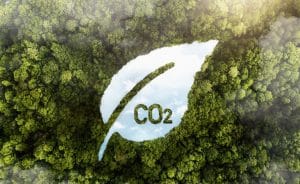Credible Sustainability Claims: Avoiding Greenwashing in 2025


Ensuring Credible Sustainability Claims is no longer a branding option but a necessity for companies in 2025. Consumers, regulators, and investors demand proof of impact, not vague promises.
This means that businesses must go beyond aspirational statements and ground their environmental commitments in transparency, verifiable data, and rigorous accountability.
In an era where greenwashing is under heavy scrutiny, credibility has become the cornerstone of trust. The question is no longer if your company should adopt sustainable practices, but how authentic and traceable those efforts really are.
The Rising Tide of Greenwashing Scrutiny: Why 2025 is Different
The debate around Credible Sustainability Claims is reaching a critical point in 2025. What once served as a marketing tool has now become a matter of compliance, transparency, and trust.
Unlike in previous years, the regulatory landscape and consumer expectations are converging to make greenwashing not only unacceptable but also highly risky for corporations.
Stricter Regulations and Compliance Pressures
In 2025, Credible Sustainability Claims are no longer optional. Regulators in the United States and Europe are tightening ESG disclosure rules, demanding measurable data instead of vague promises.
Companies that fail to comply face fines, reputational losses, and restricted access to markets. This shift underscores the urgency of aligning business practices with verifiable standards.
Consumer Expectations and Social Media Influence
Younger generations are pushing for authenticity, expecting brands to prove their Sustainability Claims with clear evidence. Social media platforms amplify scrutiny, exposing misleading campaigns within hours.
Businesses that embrace Credible Sustainability Claims gain consumer trust, while those caught greenwashing risk boycotts and viral backlash.
Investor Demands and Financial Risks
The financial sector is integrating ESG into its decision-making. Investors now view Credible Sustainability Claims as an indicator of resilience and long-term growth.
Greenwashing, on the other hand, is increasingly seen as a liability that undermines stock performance and limits access to capital.
Climate Change and the Urgency for Action
The accelerating impacts of climate change add pressure to this dynamic. Symbolic gestures are no longer acceptable when floods, droughts, and extreme weather highlight the urgency for systemic change.
Companies are expected to embed Credible Sustainability Claims into their operations and demonstrate measurable contributions to global goals.
Understanding Greenwashing: Beyond the Buzzwords
Greenwashing is more than just exaggerated advertising. It represents a deliberate attempt to mislead consumers with false or vague environmental claims, taking advantage of the global demand for sustainability.
Instead of delivering real impact, companies use buzzwords, symbols, and emotional appeals to suggest ecological responsibility that often does not exist.
In 2025, identifying Greenwashing is crucial as consumers, regulators, and investors demand verifiable proof rather than hollow promises.
Common Forms of Greenwashing
Greenwashing isn’t a monolithic entity; it manifests in several subtle yet deceptive ways, making it hard for the average consumer to spot. Here are some prevalent forms that companies use to appear more environmentally friendly than they truly are:
- Vagueness: Using terms like “eco-friendly,” “natural,” or “sustainable” without specific metrics or definitions. What exactly makes it “eco-friendly”? How is its “sustainability” measured or verified?
- Hidden Trade-offs: Highlighting a single positive environmental attribute while ignoring significant negative impacts elsewhere in the product’s lifecycle or the company’s operations. For example, promoting an “organic” product packaged in non-recyclable materials.
- No Proof: Making environmental claims without providing accessible, verifiable evidence or third-party certifications. The claim sounds good, but there’s nothing to back it up.
- Irrelevance: Highlighting an environmental claim that is true but unimportant or irrelevant to the product category, or diverting attention from more significant environmental concerns. For instance, stating a product is “CFC-free” when CFCs have been banned for decades.
- Lesser of Two Evils: Claiming to be “greener” than other products in an inherently unsustainable category. For example, “eco-friendly cigarettes” or “sustainable jet fuel” when the core activities remain environmentally damaging.
- False Labels: Creating fake certifications or endorsement labels that mimic legitimate ones, deceiving consumers into believing a product has been independently verified when it hasn’t.
- Outright Lying: Making completely false environmental claims, though this is less common due to the higher risk of legal repercussions and reputational damage.
These tactics often exploit the consumer’s goodwill and desire to make responsible choices. They undermine legitimate sustainability efforts and erode trust in businesses that are genuinely committed.
Companies that engage in greenwashing not only risk legal penalties but also severe public backlash, which can be far more damaging to their brand equity and market position in the long run.
The goal for businesses should be to move beyond superficial claims and embrace verifiable, transparent environmental practices rooted in genuine commitment. True sustainability is about systemic change, not just marketing ploys.
In 2025, the ability to differentiate between authentic environmental stewardship and mere greenwashing will be a key determinant of a company’s success and reputation.
Building a Foundation of Credibility: Pillars of Authentic Claims
Creating authentic Sustainability Claims requires much more than marketing slogans. It demands a holistic strategy that integrates transparency, accountability, and measurable impact across all operations.
For businesses in 2025, credibility is not built on isolated projects but on long-term commitment to ethical practices and verifiable data. The strength of Sustainability Claims lies in how consistently they align with real environmental action.
Transparency and Disclosure in Sustainability Claims
Transparency is the cornerstone of credible Sustainability Claims. Companies must go beyond selective reporting and provide full disclosure of environmental impacts, from energy use and water management to supply chain emissions.
Clear and accessible reports give consumers confidence that Sustainability Claims are genuine rather than superficial.
When businesses openly communicate both progress and challenges, they signal integrity and accountability, reinforcing trust among stakeholders.
Verifiable Data Behind Sustainability Claims
Numbers are what separate authentic Sustainability Claims from empty promises. Every claim should be supported by measurable indicators such as carbon reduction rates, waste diversion percentages, or renewable energy adoption.
Independent verification adds further credibility, ensuring that Sustainability Claims withstand scrutiny from regulators, investors, and consumers alike.
In 2025, companies that invest in reliable tracking systems and transparent reporting frameworks are more likely to be perceived as leaders in sustainability.
Why Authentic Sustainability Claims Matter for the Future
The credibility of Sustainability Claims directly impacts consumer trust, investor confidence, and long-term competitiveness.
As regulatory pressure intensifies and public awareness grows, companies that rely on vague or misleading Sustainability Claims face significant reputational and financial risks.
By contrast, those that build their sustainability strategies on transparency and verifiable data will not only avoid accusations of greenwashing but also create lasting value.
In this new era, authentic Sustainability Claims are not optional; they are essential pillars of business credibility.
Lifecycle Thinking
True sustainability considers the entire lifecycle of a product or service – from raw material extraction, manufacturing, distribution, use, and end-of-life disposal.
Companies that adopt a lifecycle assessment (LCA) approach can identify environmental hotspots and make informed decisions to reduce their overall impact.
This holistic perspective prevents “hidden trade-offs” and ensures claims are comprehensive.
By understanding the environmental impact at each stage, companies can prioritize efforts where they will have the most significant effect.
This approach goes beyond simply focusing on one green aspect and instead embraces a more complex, interconnected view of environmental responsibility. It’s about systemic change rather than isolated improvements.
By consciously integrating these pillars into their operational and communication strategies, companies can move beyond mere compliance and build a reputation for authentic, impactful sustainability.
This not only mitigates the risk of greenwashing but also fosters deeper trust with consumers, investors, and regulatory bodies, providing a durable competitive advantage in the evolving market of 2025.
Navigating the Regulatory Landscape for Credible Claims in 2025

The regulatory landscape in 2025 is reshaping how companies frame their Sustainability Claims, demanding greater accountability and transparency. What was once seen as flexible guidance is now evolving into binding law.
Businesses that fail to adapt face not only fines but also severe reputational setbacks. To maintain credibility, companies must recognize that credible Sustainability Claims are no longer optional but legal and ethical obligations.
Regulatory Bodies Governing Sustainability Claims
Multiple agencies now oversee the validity of Sustainability Claims, each setting unique but increasingly strict standards.
In the United States, the FTC Green Guides establish clarity and substantiation rules for environmental marketing, while the SEC emphasizes ESG-related financial disclosures.
In Europe, the EU Green Claims Directive requires independent verification of environmental statements, setting a global benchmark. These frameworks make it clear that Sustainability Claims must be specific, verifiable, and resistant to scrutiny.
Consequences of Weak or Misleading Sustainability Claims
The risks of mismanaging Sustainability Claims extend far beyond compliance penalties. Greenwashing scandals can trigger multimillion-dollar fines, investor withdrawal, and irreparable brand damage.
Consumers, regulators, and activists increasingly hold companies accountable, meaning a single false statement can erode decades of trust.
In the digital era, misleading Sustainability Claims spread quickly across global platforms, amplifying damage and accelerating financial and reputational fallout.
Building Compliance into Sustainability Claims Strategy
To safeguard against risks, companies must embed compliance into the foundation of their Sustainability Claims.
This involves regular legal audits of marketing materials, ongoing monitoring of regulatory updates, and collaboration with sustainability experts for third-party validation.
Companies that proactively align their Sustainability Claims with evolving regulations not only avoid penalties but also strengthen investor confidence and consumer loyalty.
In 2025, credibility is built through proactive engagement, transparency, and measurable results.
Internal Audits and Stakeholder Engagement: Pillars of Authenticity
For sustainability claims to hold weight, they must be built on a foundation of rigorous internal assessment and transparent engagement with all stakeholders.
An isolated marketing campaign about eco-friendliness without genuine internal commitment risks being exposed as greenwashing.
In 2025, companies must demonstrate that sustainability is embedded in their operational DNA, supported by continuous improvement processes and open dialogue.
Conducting Robust Internal Audits
Self-assessment is a crucial first step. Regular, comprehensive internal audits of a company’s environmental impact and sustainability initiatives are essential to identify areas of strength, weakness, and potential risk.
These audits should go beyond mere compliance checks, delving into the efficacy of practices, the accuracy of data collection, and alignment with stated goals.
The process should involve cross-functional teams, ensuring that sustainability is integrated across departments, from procurement to production and logistics.
- Reviewing supply chain practices for ethical and environmental compliance.
- Assessing energy consumption and waste generation data for accuracy.
- Evaluating the environmental impact of product design and packaging.
- Benchmarking performance against industry standards and best practices.
An effective internal audit not only uncovers potential greenwashing vulnerabilities but also fosters a culture of accountability and continuous improvement.
It provides the necessary data and insights to refine sustainability strategies and ensure that claims are always reflective of actual performance.
Engaging with Internal Stakeholders
Authentic sustainability originates from within. Employees at all levels must be informed, engaged, and empowered to contribute to the company’s environmental goals.
This includes providing training on sustainable practices, fostering an open channel for feedback, and celebrating environmental achievements.
When employees understand and believe in the company’s sustainability mission, they become powerful advocates and drivers of genuine change.
Leadership commitment is non-negotiable. Senior management must visibly champion sustainability initiatives, allocate necessary resources, and integrate environmental performance into strategic decision-making.
Their buy-in sends a clear message throughout the organization that sustainability is a core business imperative, not just a fleeting trend.
Fostering Dialogue with External Stakeholders
Beyond internal operations, meaningful engagement with external stakeholders is vital. This includes customers, investors, community groups, NGOs, and even competitors.
Openly communicating sustainability efforts, challenges, and progress builds trust and provides valuable external perspectives.
Stakeholder feedback can offer critical insights, highlight blind spots, and inform more effective and credible sustainability strategies.
Actively listening to concerns, addressing criticisms transparently, and collaborating on solutions can transform potential adversaries into allies.
This proactive engagement demonstrates a company’s commitment to continuous improvement and its willingness to be held accountable, further cementing the credibility of its sustainability claims.
It’s a dynamic process that shows a willingness to evolve and adapt based on collective input.
By diligently conducting internal audits and engaging meaningfully with both internal and external stakeholders, companies can ensure that their sustainability claims are not just marketing statements, but genuine reflections of their operational realities.
This integrated approach builds resilience against greenwashing accusations and lays the groundwork for truly impactful environmental stewardship in 2025 and beyond.
Future-Proofing Your Sustainability Strategy
In a world where environmental expectations are constantly evolving and the threats of climate change become more pronounced, a company’s sustainability strategy cannot remain static.
To genuinely avoid greenwashing in 2025 and beyond, businesses must actively future-proof their approach, anticipating regulatory changes, technological advancements, and shifts in consumer sentiment.
This proactive stance is essential for maintaining credibility and long-term relevance.
Embracing Innovation and Technology
Technological advancements offer powerful tools for enhancing sustainability and ensuring the credibility of claims.
From AI-driven supply chain transparency platforms to blockchain for tracking sustainable sourcing, new technologies can provide unprecedented levels of data accuracy and verifiability.
Investing in these innovations can help companies move beyond anecdotal evidence to hard, immutable facts.
- Utilizing IoT sensors to monitor energy and water consumption in real-time.
- Implementing blockchain for transparent tracking of materials from source to consumer.
- Leveraging artificial intelligence for optimized resource allocation and waste reduction.
- Exploring carbon capture and sequestration technologies.
Embracing innovation isn’t just about efficiency; it’s about building a robust, auditable system for sustainability. It enables companies to make more precise claims and demonstrate their commitment through measurable, tech-backed progress.
Adopting Circular Economy Principles
The linear “take-make-dispose” model is increasingly unsustainable. Future-proofing sustainability involves a shift towards circular economy principles, where products and materials are designed for durability, reuse, repair, and recycling.
This approach minimizes waste, optimizes resource use, and reduces environmental impact across the product lifecycle. Companies that embrace circularity can make more profound, systemic claims about their environmental commitment.
This paradigm shift offers numerous benefits, from reduced material costs to enhanced brand reputation.
By designing out waste and pollution, keeping products and materials in use, and regenerating natural systems, companies can define a new standard of environmental leadership and provide concrete evidence of their impact.
Anticipating Policy and Market Shifts
Regulatory frameworks are tightening, carbon pricing mechanisms are expanding, and consumer preferences are continuously evolving. Companies must develop an agile sustainability strategy that can adapt to these shifts.
This requires ongoing market research, engagement with policy-makers, and scenario planning to anticipate future challenges and opportunities.
For example, preparing for increased carbon reporting requirements or potential bans on certain materials can turn a regulatory threat into a competitive advantage.
Similarly, understanding the nuances of evolving consumer demands for transparency and ethical sourcing allows companies to align their offerings proactively.
A robust future-proof strategy anticipates these changes, ensuring that the company remains ahead of the curve rather than reacting to it.
By integrating innovation, adopting circular economy models, and anticipating future shifts, companies can build a sustainability strategy that is not only robust today but also resilient and credible for the long haul.
This forward-looking perspective is key to ensuring that their commitment to sustainability is perceived as genuine and impactful by all stakeholders in 2025 and beyond.
Cultivating a Culture of Transparency and Accountability
Beyond specific claims and technological solutions, the most fundamental aspect of avoiding greenwashing and ensuring credible sustainability in 2025 lies in cultivating an entrenched culture of transparency and accountability within the organization.
This isn’t a checklist to tick off; it’s a deep-seated commitment that shapes decision-making at every level, from the boardroom to the factory floor.
Leadership by Example
True sustainability leadership begins at the top. When senior executives visibly champion environmental initiatives, integrate sustainability into core business strategies, and allocate necessary resources, it sends a powerful message throughout the company.
This commitment must be more than rhetorical; it must be reflected in measurable goals, performance reviews, and investment decisions.
Leaders embodying sustainable values inspire employees to do the same, fostering an environment where environmental responsibility is a shared value, not just a department’s task.
This executive-level conviction is crucial for aligning incentives and ensuring consistency across all company operations, from product development to marketing.
Without it, even the most well-intentioned sustainability efforts can falter under competing priorities or a lack of clear direction.
Empowering Employees
Every employee plays a role in a company’s sustainability journey. By educating staff on environmental issues, the company’s goals, and their individual impact, businesses can transform their workforce into a powerful force for change.
Providing training on sustainable practices, encouraging suggestions for improvement, and recognizing eco-conscious efforts empowers employees to contribute actively.
When employees understand the “why” behind sustainability initiatives and feel their contributions are valued, they become internal advocates for authentic environmental performance.
This widespread engagement can identify and flag potential greenwashing risks from within before they become public issues.
Creating cross-functional “green teams” or sustainability committees can further drive engagement, allowing employees from diverse departments to collaborate on innovative solutions and share best practices across the organization.
Embed Accountability Mechanisms
Accountability ensures that sustainability commitments translate into action. This involves establishing clear metrics, setting ambitious yet achievable targets, and regularly reporting on progress.
Integrating environmental performance into key performance indicators (KPIs) for relevant departments and individuals creates a direct link between sustainability goals and professional responsibilities.
External audits and stakeholder feedback loops also serve as vital accountability mechanisms, providing an independent check on claims and performance.
Transparency about both successes and failures is critical. Acknowledging challenges and outlining plans to address them demonstrates honesty and a commitment to continuous improvement, which is far more credible than pretending to be perfect.
This openness builds trust with consumers and investors who are increasingly looking for genuine efforts, not just idealized narratives.
Ultimately, preventing greenwashing in 2025 and achieving genuine sustainability credibility is about weaving environmental responsibility into the very fabric of a company’s culture.
It is a continuous journey of learning, adaptation, and unwavering commitment to doing business in a way that respects both people and the planet.
Future Trends: Beyond 2025 in Sustainability Claims

As we look beyond 2025, the landscape of sustainability claims will continue to evolve, driven by emerging technologies, increasing regulatory pressure, and a more sophisticated public.
Companies that wish to remain credible leaders in environmental stewardship must anticipate these future trends and adapt their strategies accordingly. The next decade will likely bring even greater demands for verifiable, systemic impact.
Digital Product Passports and Traceability
One significant trend on the horizon is the widespread adoption of “Digital Product Passports” (DPPs).
These digital records will contain comprehensive information about a product’s origin, materials, manufacturing process, carbon footprint, and recyclability, accessible via QR codes or NFC tags.
DPPs will enable unprecedented levels of transparency and traceability, allowing consumers to verify environmental claims directly and instantly.
For companies, this means a significantly higher standard of data collection and disclosure will become the norm. The era of vague claims will be virtually impossible in many sectors due to this granular transparency.
This level of traceability will also extend deeper into supply chains, fueled by blockchain and advanced data analytics.
Consumers and regulators will demand to know not just the final product’s impact but also the environmental and social conditions under which raw materials were extracted and processed.
Harmonization of Global Standards
While 2025 will see a patchwork of regional regulations, the long-term trend points towards greater harmonization of global sustainability reporting standards and certifications.
International bodies like the ISSB (International Sustainability Standards Board) are working to establish comprehensive global baselines for climate and sustainability-related disclosures.
This convergence will simplify compliance for multinational corporations but also raise the minimum bar for what constitutes a credible sustainability claim worldwide.
Companies will need to align their reporting frameworks with these emerging global benchmarks.
Focus on Regenerative Practices
Beyond merely reducing negative environmental impact, the focus will increasingly shift towards “regenerative” practices. This involves actively restoring and replenishing natural systems, rather than just minimizing harm.
Examples include regenerative agriculture, which improves soil health and biodiversity, or manufacturing processes that clean air and water.
Companies making regenerative claims will need to demonstrate scientifically validated positive impacts on ecosystems, pushing the boundaries of what “sustainable” truly means.
This will move beyond net-zero to “nature-positive” targets, where businesses contribute to an environmental net gain. Verifying these claims will require cutting-edge scientific measurement and robust ecological accounting.
These future trends highlight a clear trajectory: the bar for credible sustainability claims will continue to rise.
Companies that invest now in robust data collection, systemic change, and genuine transparency will be best positioned to thrive in this evolving environment, building lasting trust and maintaining their competitive edge well beyond 2025.
| Key Point | Brief Description |
|---|---|
| 🔍 Greenwashing Scrutiny | Increased consumer awareness and stricter regulations amplify risks of unsubstantiated claims. |
| ✅ Credibility Pillars | Demand for transparency, verifiable data, third-party verification, and lifecycle thinking. |
| ⚖️ Regulatory Compliance | Navigating evolving laws (FTC, SEC, EU) is critical to avoid legal/reputational damage. |
| 📈 Future-Proofing | Embracing innovation, circularity, and anticipating policy shifts for long-term relevance. |
Frequently Asked Questions About Sustainability Claims in 2025
Greenwashing refers to misleading environmental claims that make a company or product appear more eco-friendly than it truly is. In 2025, it’s a major concern due to heightened consumer awareness, stricter regulations, and increased penalties, risking severe reputational and financial damage to companies found guilty of deceptive practices.
Credibility stems from transparency, verifiable data, and third-party certifications. Companies should openly share environmental metrics, seek independent validation for their claims, and adopt a lifecycle approach to assess their product’s impact. Authentic claims are backed by measurable evidence, not just marketing rhetoric.
Regulatory bodies like the FTC (US) and the EU are actively developing and enforcing stricter guidelines to combat greenwashing. They mandate truthful advertising, clear disclosure of environmental impacts, and require companies to substantiate their claims with evidence. Non-compliance can lead to substantial fines and legal repercussions.
Engaging employees, customers, investors, and NGOs fosters transparency and accountability. Employee involvement ensures internal alignment, while external feedback provides critical insights and builds trust. Open dialogue demonstrates a genuine commitment to continuous improvement, fortifying the credibility of sustainability claims.
Beyond 2025, expect Digital Product Passports for radical transparency, greater harmonization of global reporting standards, and a stronger focus on “regenerative” practices aimed at actively restoring ecosystems. These trends will demand even higher levels of data integrity and demonstrable positive environmental impact from businesses.
Conclusion
The future of Credible Sustainability Claims depends on how businesses adapt to growing demands for accountability.
Companies that rely on vague promises will face reputational damage, while those that provide transparent reports, measurable data, and third-party verification will emerge as leaders.
Building credibility requires more than compliance. It involves aligning strategies with global standards like those highlighted by the United Nations, which warns that greenwashing undermines climate action.
At the same time, frameworks from organizations such as the ISEAL Alliance show how strong verification systems can strengthen trust and create long-term value.
Ultimately, businesses that commit to authentic and credible sustainability will not only avoid penalties but also strengthen consumer trust, attract responsible investors, and future-proof their operations.
By embedding transparency and measurable results at the core of their Sustainability Claims, companies can transform environmental responsibility into a competitive advantage and contribute meaningfully to global climate solutions.
Liked the article?





